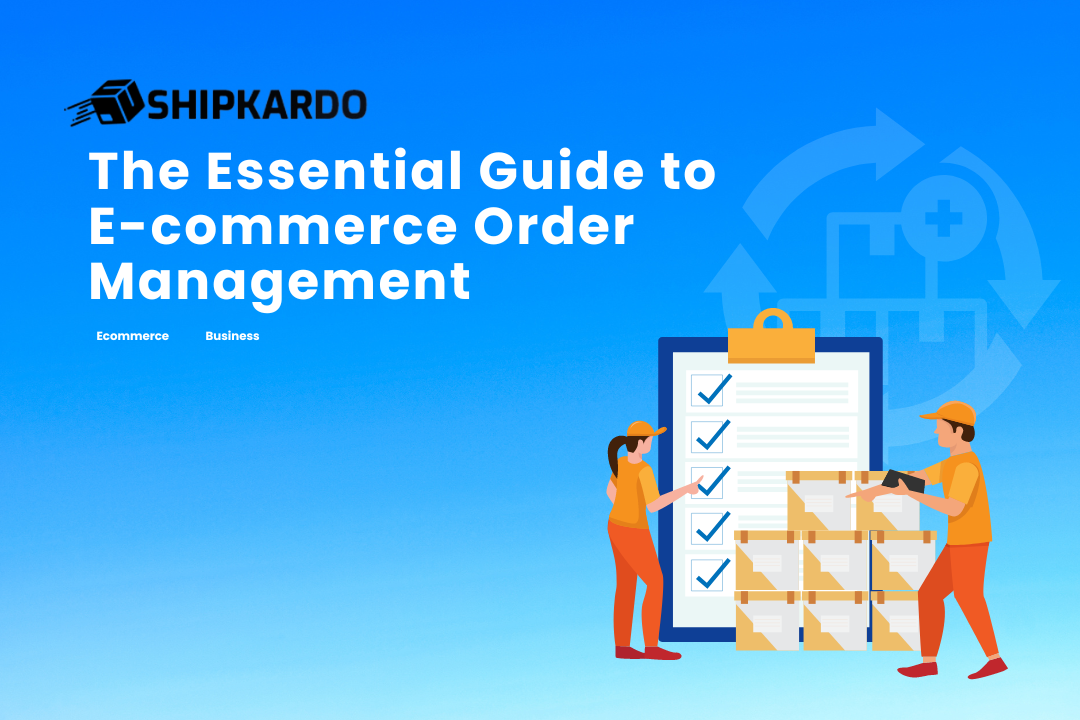
1. Understanding E-commerce Order Management
E-commerce order management refers to the process of overseeing the entire lifecycle of an order, from the moment it is placed by a customer to its fulfillment and delivery. It involves tasks such as order processing, inventory management, shipping, and handling returns.
2. Key Components of E-commerce Order Management
Order Placement: The process begins when a customer places an order through the e-commerce website or platform.
Order Processing: Once an order is received, it needs to be processed, which involves verifying payment, checking product availability, and preparing the order for shipment.
Inventory Management: Keeping track of inventory levels is crucial to ensure that products are available to fulfill orders. Inventory management systems help in monitoring stock levels and triggering reorders when necessary.
Shipping and Fulfillment: Orders need to be packed and shipped to the customer’s address efficiently and accurately. E-commerce businesses may use third-party logistics (3PL) providers or handle shipping in-house.
Order Tracking: Providing customers with tracking information allows them to monitor the status of their orders and estimated delivery times.
Returns Management: Handling returns and exchanges is an essential part of order management. Implementing a streamlined returns process helps maintain customer satisfaction.
Customer Communication: Keeping customers informed about their orders through order confirmation emails, shipping notifications, and updates on any delays is crucial for providing a positive shopping experience.
3. Best Practices for Effective E-commerce Order Management
Automate Processes: Utilize automation tools and software to streamline order processing, inventory management, and shipping tasks.
Integrate Systems: Integrate your e-commerce platform with inventory management, shipping, and customer relationship management (CRM) systems to ensure smooth data flow and avoid errors.
Optimize Inventory Levels: Maintain optimal inventory levels to avoid stockouts and overstock situations. Utilize demand forecasting and inventory optimization techniques to manage inventory effectively.
Offer Multiple Shipping Options: Provide customers with various shipping options, including expedited shipping, to cater to their preferences and urgency.
Implement Order Tracking: Enable order tracking functionality on your website or provide tracking information through email to keep customers informed about their orders’ status.
Prioritize Customer Service: Offer excellent customer service by promptly responding to inquiries, resolving issues, and providing transparent communication throughout the order fulfillment process.
4. Tools and Software for E-commerce Order Management
E-commerce Platforms: Platforms like Shopify, WooCommerce, Daraz, Amazon and Magento offer built-in order management features.
Inventory Management Software: Software like Shipkardo, Skubana, and Ordoro help businesses manage inventory across multiple sales channels.
Shipping Integration: Integrate Shipping couriers with your e-commerce inventory management system and streamline the shipping process and offer best shipping rates.
By implementing effective e-commerce order management practices and utilizing the right tools and software, businesses can streamline their operations, improve customer satisfaction, and drive growth in their e-commerce ventures.
